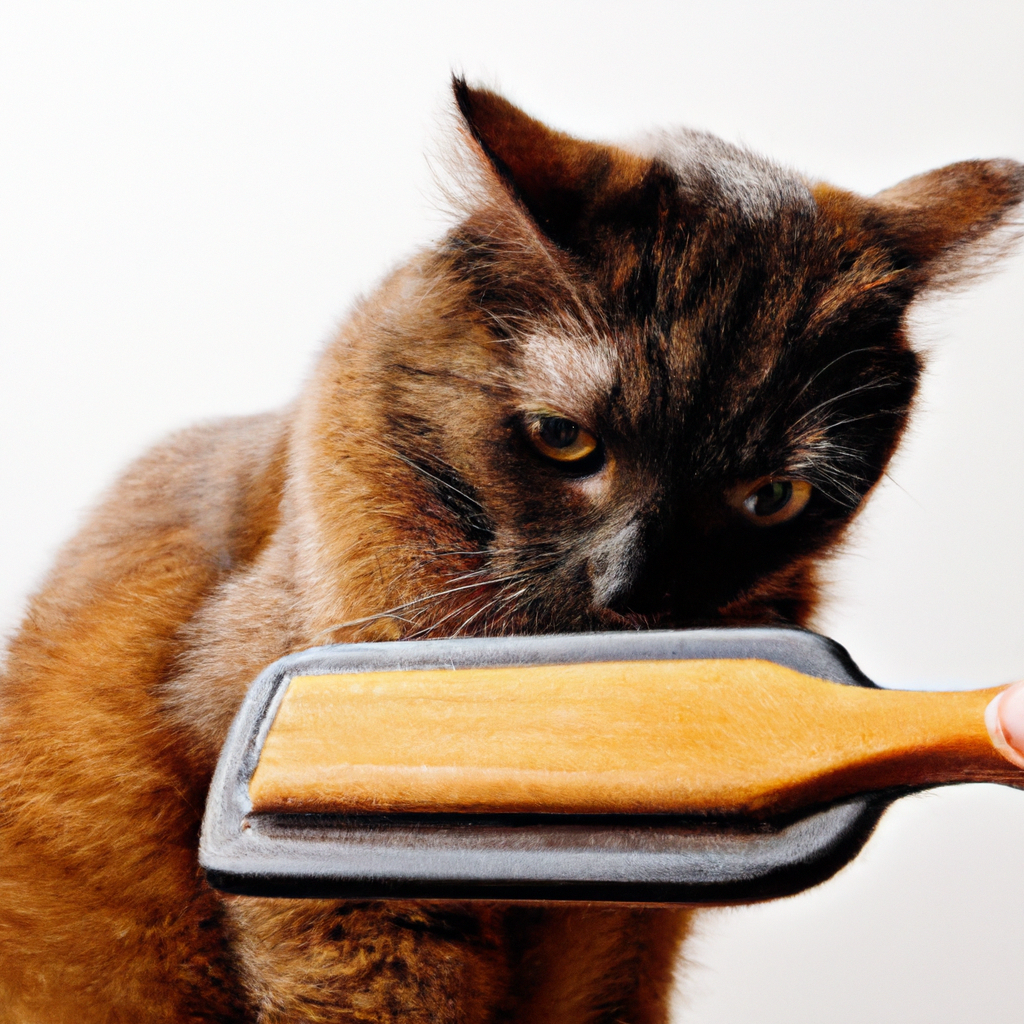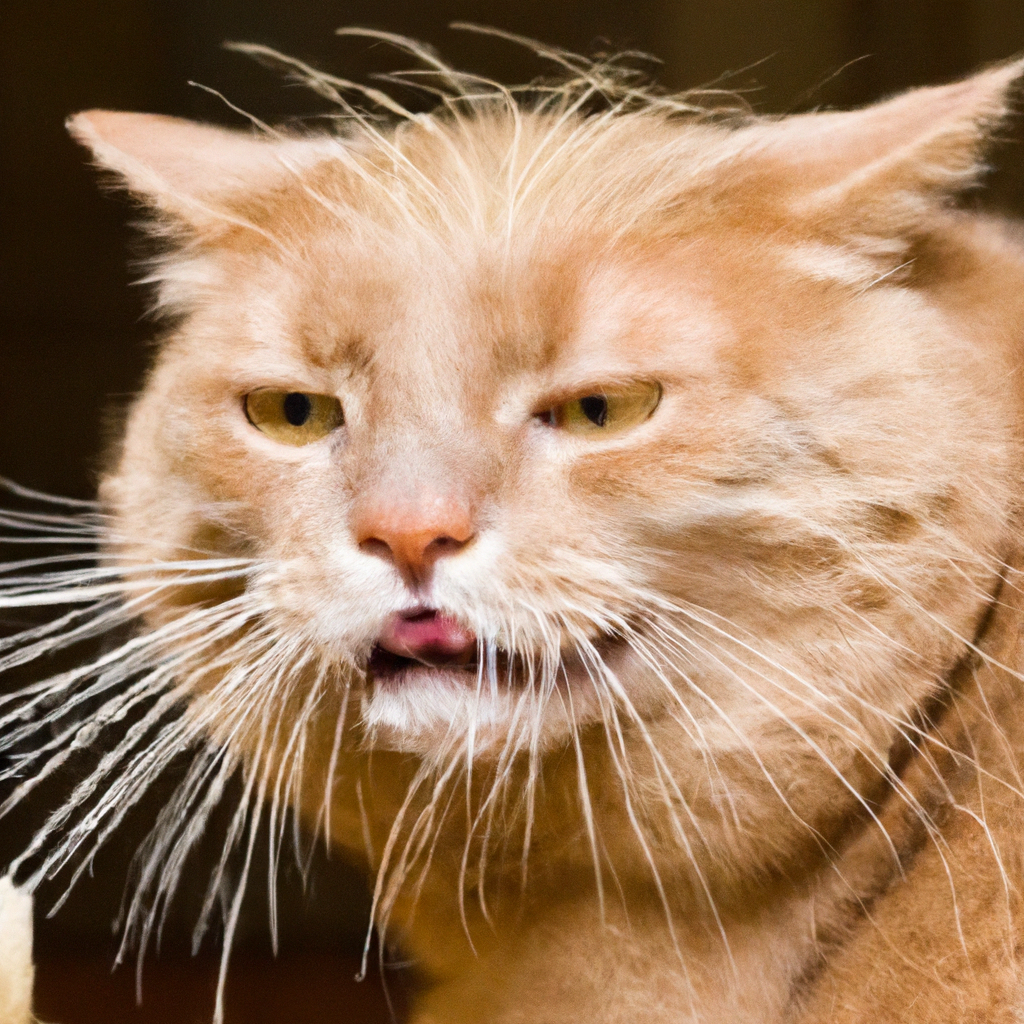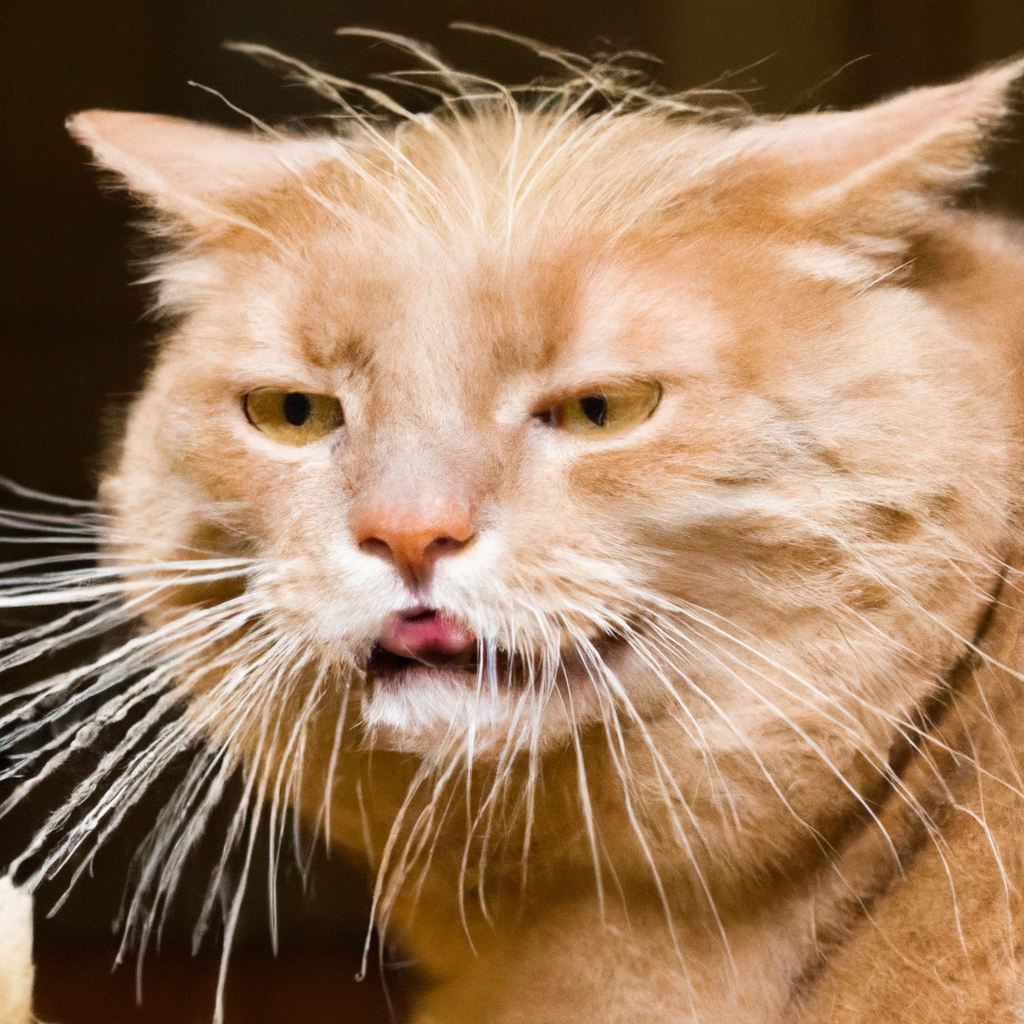If you are a proud owner of a tabby cat, you may have noticed the constant battle against their shedding. It can be frustrating to find clumps of fur scattered all over your furniture and clothes. But fear not, because in this article, we will share some effective tips and tricks on how to reduce shedding in tabby cats. With a few simple adjustments to their diet, grooming routine, and environmental factors, you can minimize the amount of fur your beloved tabby leaves behind and save yourself from the constant cleanup. So let’s get started on achieving a fur-free home and a happy, healthy kitty.

Understanding Tabby Cats
Tabby cats are a popular breed of domestic cats that have a distinctive coat pattern. What makes tabby cats unique is the “tabby” markings on their coat, which often consist of stripes, spots, or swirls. These markings can come in various colors and combinations, making each tabby cat truly one-of-a-kind. Tabby cats can also differ in terms of their personality traits and behavior, but one thing they all have in common is shedding.
Different Types of Tabby Cats
While tabby cats share the same coat pattern, there are actually different types of tabby cats based on the markings and colors they exhibit. The most common types of tabby cats include classic tabbies, mackerel tabbies, spotted tabbies, and ticked tabbies. Classic tabbies have bold swirling patterns, mackerel tabbies have thin stripes resembling fish bones, spotted tabbies have distinct spots all over their body, and ticked tabbies have agouti hairs which give them a salt-and-pepper appearance. Understanding the different types of tabby cats can help you appreciate the unique beauty of your furry companion.
Why Tabby Cats Shed
Shedding is a natural process for all cats, including tabby cats. Shedding refers to the loss of old or damaged hair to make way for new growth. Tabby cats shed for various reasons, including maintaining their coat’s health, regulating body temperature, and getting rid of dead or excess hair. Shedding is also influenced by factors such as genetics, diet, and environmental conditions. Although shedding is a normal occurrence, it can be managed and reduced to minimize its impact on your daily life.
Importance of Reducing Shedding
Reducing shedding in tabby cats offers several benefits, not only for the cat but also for their owners. By minimizing shedding, you can minimize allergic reactions, prevent excessive hair accumulation around the home, and help maintain a healthy coat.
Minimize Allergic Reactions
For individuals with allergies, contact with cat hair can trigger uncomfortable symptoms such as sneezing, itching, and even difficulty breathing. By reducing shedding, you can minimize the amount of allergens present in your home, making it more bearable for those susceptible to cat allergies.
Prevent Excessive Hair Around the Home
Shedding can result in a considerable amount of loose fur floating around your living space. This can be particularly problematic for those who strive to keep a clean and tidy home. By taking steps to reduce shedding, you can prevent excessive hair accumulation on your furniture, carpets, and clothing, making your home more aesthetically pleasing and easier to maintain.
Maintain a Healthy Coat
A well-maintained coat plays a vital role in a cat’s overall health and well-being. By reducing shedding and ensuring proper grooming practices, you can help prevent matting and tangling of the fur, which can be uncomfortable for your tabby cat. Additionally, regular grooming helps distribute the natural oils produced by the skin, keeping the coat shiny and healthy.

Creating a Healthy Environment
To effectively reduce shedding in tabby cats, it’s essential to create a healthy environment for them. This involves providing a balanced diet, including supplements in their meals, and stimulating regular grooming.
Provide a Balanced Diet
Feeding your tabby cat a high-quality, nutritionally balanced diet is essential for their overall health, including the health of their skin and coat. Make sure to choose cat food that contains all the necessary nutrients, including omega-3 fatty acids, which help promote healthy skin and reduce shedding. Consult your veterinarian for recommendations on the best diet for your tabby cat.
Include Supplements in Their Meals
Supplements such as omega-3 fatty acids or fish oil can greatly contribute to reducing shedding in tabby cats. These supplements help nourish the skin and coat, promoting healthier hair growth and minimizing excessive shedding. Talk to your veterinarian about the appropriate dosage and type of supplements to include in your tabby cat’s diet.
Stimulate Regular Grooming
Regular grooming is crucial for controlling shedding in tabby cats. It helps remove loose hair before it can be shed around the house. Spend some quality time with your tabby cat by brushing their coat regularly using a cat-specific brush or comb. This not only reduces shedding but also helps prevent matting and hairballs. Aim to groom your tabby cat at least once or twice a week, depending on their coat length and thickness.
Grooming Techniques
To effectively control shedding in tabby cats, it’s important to employ proper grooming techniques. Here are some techniques that can help you manage shedding effectively:
Brushing their Coat
Brushing your tabby cat’s coat is one of the most effective ways to control shedding. Use a cat-specific brush or comb, and gently run it through their fur in the direction of hair growth. This helps remove loose hair and prevents it from ending up on your furniture or clothing. Be gentle and patient, especially if your cat is not used to being groomed. Gradually increase the duration of grooming sessions as your cat becomes more comfortable.
Using a Deshedding Tool
Deshedding tools, such as special brushes or gloves designed to remove excess hair, can be highly effective in controlling shedding in tabby cats. These tools are designed to reach deep into the fur and remove loose hairs from the undercoat. Remember to follow the instructions provided with the tool and use it gently to avoid causing any discomfort to your tabby cat.
Bathing Regularly
While cats are known for their self-grooming abilities, bathing them occasionally can help reduce shedding by removing loose hair. Use a cat-specific shampoo and follow the instructions provided. It’s important to note that not all cats enjoy being bathed, so it’s essential to introduce them to the process gradually and ensure they feel safe and comfortable throughout the bathing experience.
Controlling Shedding through Hygiene
In addition to grooming techniques, maintaining proper hygiene in your home can contribute to minimizing shedding and keeping your living space clean and fur-free. Here are some tips to help you control shedding through hygiene:
Cleaning and Vacuuming Regularly
Regular cleaning and vacuuming of your home can help eliminate loose fur and reduce the amount of hair that settles on surfaces. Use a vacuum cleaner equipped with a pet hair attachment to effectively remove hair from carpets, furniture, and other surfaces. Additionally, wiping down surfaces with a damp cloth or electrostatic dusting cloths can help capture stray hairs.
Using Lint Rollers and Sticky Tape
Lint rollers and sticky tape are excellent tools for quickly removing hair from upholstery, clothing, and other fabric surfaces. Keep these handy throughout your home to easily remove hair before it becomes an eyesore or lands on your clothing when you are on the go.
Washing Pet Bedding Frequently
Washing your tabby cat’s bedding regularly helps eliminate accumulated hair and keeps their sleeping area clean. Wash bedding in hot water and use pet-safe laundry detergent to ensure that any potential allergens or dirt are thoroughly removed. By providing a clean and hair-free sleeping spot, you can further reduce shedding and maintain a hygienic living environment for both you and your tabby cat.
Allergies and Environment
If you or someone in your household suffers from allergies, taking additional steps to manage allergens in the home can greatly improve comfort levels. Here are some tips for creating an allergy-friendly environment for tabby cats:
Managing Allergens in the Home
Reducing the allergen load in your home can significantly alleviate allergy symptoms. Regularly dust and wipe down surfaces, vacuum carpets and upholstery, and use high-efficiency particulate air (HEPA) filters in your HVAC system to minimize the circulation of allergens. Consider investing in a quality air purifier that is highly effective at capturing pet dander and other allergens present in the air.
Creating a Designated Pet-free Zone
Designate a specific area in your home as a pet-free zone, especially in rooms where allergy sufferers spend a significant amount of time, such as bedrooms or the living room. This pet-free zone can provide a sanctuary for allergy sufferers to retreat to when they need a break from allergens.
Using Air Purifiers and Ventilation
Using air purifiers in conjunction with proper ventilation can help filter out airborne allergens and improve indoor air quality. Keep windows open whenever possible to allow fresh air to circulate throughout your home. Good ventilation helps remove allergens and keeps the air in your home clean and fresh.
Preventing Stress and Anxiety
Stress and anxiety can contribute to excessive shedding in tabby cats. Creating a stress-free environment can help reduce shedding and promote a healthier coat. Here are some tips for preventing stress and anxiety in your tabby cat:
Providing Proper Exercise and Enrichment
Engaging your tabby cat in regular exercise and providing them with mental stimulation can help combat stress and anxiety. Play with your cat using toys and provide scratching posts or climbing structures to keep them physically and mentally active. This helps redirect their energy and prevents stress-related behaviors, such as excessive grooming and shedding.
Implementing a Regular Routine
Cats thrive on routine, as it provides them with a sense of security and predictability. Establish a consistent daily routine for feeding, playtime, and rest. Having a predictable schedule helps reduce stress and anxiety, which in turn can contribute to a healthier coat and reduced shedding.
Creating a Calm and Safe Space
Provide your tabby cat with a designated quiet and comfortable space where they can retreat to when they need some downtime. This space can be equipped with a cozy bed, toys, and a litter box. Ensure that this area is peaceful and free from disturbances, helping to create a calm environment that promotes relaxation and reduces stress.
Healthcare and Preventive Measures
Maintaining your tabby cat’s overall health is crucial for keeping shedding under control. Regular veterinary check-ups, addressing underlying medical conditions, and utilizing preventive flea and tick treatments are essential to prevent excessive shedding. Here’s what you need to know:
Regular Veterinary Check-ups
Schedule regular check-ups with your veterinarian to monitor your tabby cat’s health and address any concerns. Your vet can provide guidance on maintaining a healthy coat, recommend appropriate grooming practices, and check for any underlying medical conditions that may contribute to excessive shedding.
Addressing Underlying Medical Conditions
Certain medical conditions, such as allergies, skin infections, hormonal imbalances, or parasites, can cause excessive shedding in tabby cats. If you notice a sudden increase in shedding or any other concerning symptoms, it’s important to seek veterinary advice to rule out any underlying health issues. Treating these conditions will not only help reduce shedding but also improve your cat’s overall well-being.
Utilizing Preventive Flea and Tick Treatments
Fleas and ticks can cause irritation and discomfort for your tabby cat, leading to excessive grooming and shedding. Utilize preventive flea and tick treatments as recommended by your veterinarian to protect your cat from these pests. By protecting your tabby cat from flea and tick infestations, you can help minimize shedding caused by these external parasites.
Controlling Shedding in Different Seasons
Tabby cats, like many other cats, undergo seasonal coat changes. Understanding these changes and adjusting your grooming and hygiene practices accordingly can help manage shedding effectively throughout the year. Here’s what you need to know about controlling shedding in different seasons:
Seasonal Coat Changes
Tabby cats typically experience increased shedding during the spring and fall seasons. During these times, they shed their winter or summer coats to prepare for the changing weather. Shedding may be more noticeable during these transitional periods, but with proper grooming and care, you can minimize its impact.
Adjusting Grooming and Hygiene Practices
During peak shedding seasons, it’s important to groom your tabby cat more frequently to remove excess hair and prevent matting. Increase the frequency of brushing sessions to help control shedding and ensure that your cat’s coat remains clean and healthy. Additionally, keep up with regular cleaning and vacuuming to manage the increased amount of shed hair around your home.
Adapting to Seasonal Environmental Factors
Environmental factors, such as temperature and humidity, can influence shedding in tabby cats. Adjusting your home’s climate control to maintain a comfortable temperature and humidity level can help reduce shedding. Remember to provide fresh water and ensure that your tabby cat has access to shady areas during hot weather to prevent excessive shedding due to heat stress.
Conclusion
Understanding how to effectively manage shedding in tabby cats is crucial for maintaining a clean and comfortable living environment, as well as promoting your cat’s overall health and well-being. By following proper grooming techniques, maintaining good hygiene, creating an allergy-friendly environment, reducing stress, and addressing any underlying health issues, you can control shedding and enjoy a strong bond with your tabby cat. Remember, shedding is a natural process, but with a little extra care, you can minimize its impact and fully embrace the joys of having a tabby cat as a part of your family.

